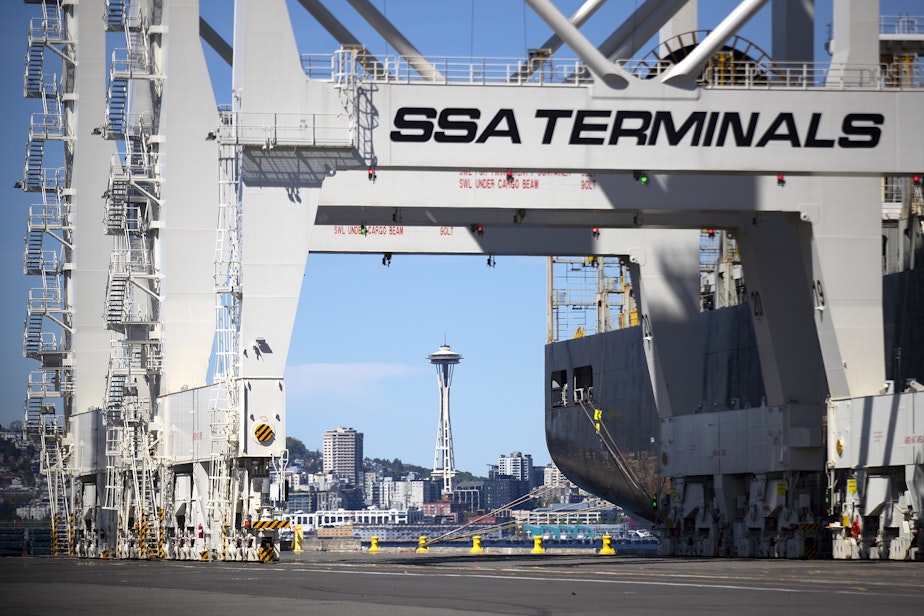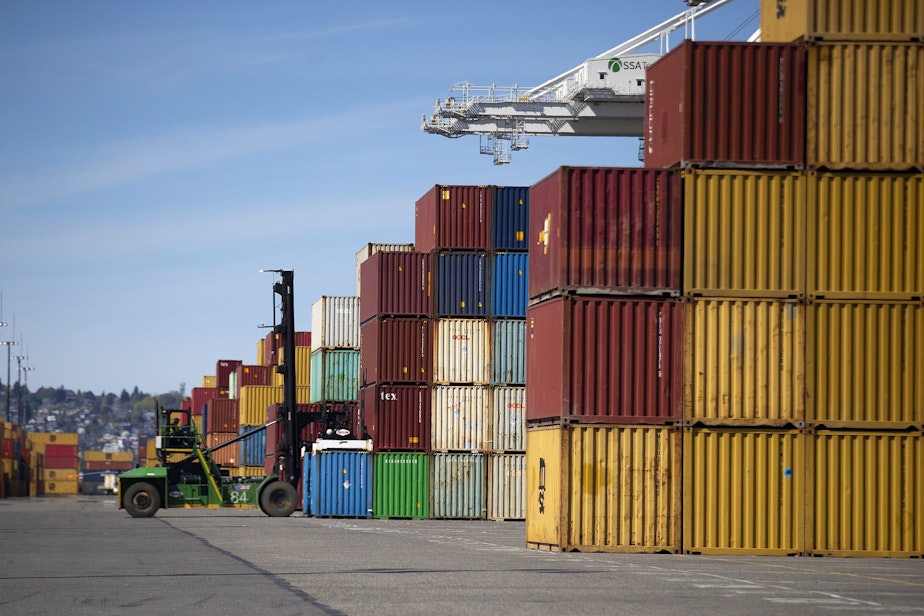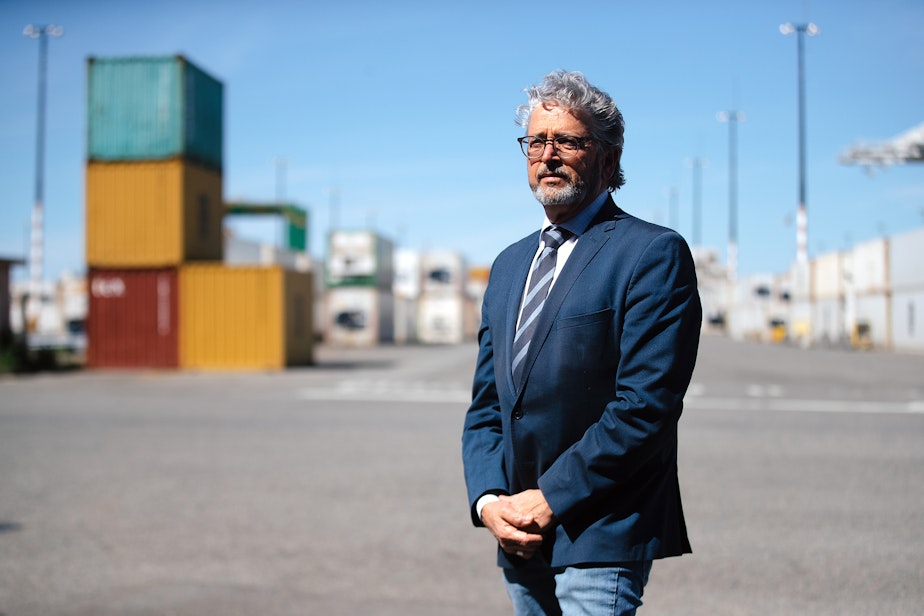Tariffs are paused. Will the ports of Seattle, Tacoma rebound?

The constantly shifting currents of the trade war between the U.S. and China have led to an obsession with the ports over the past few weeks.
All eyes have been on Seattle and Tacoma, key entry points for goods imported from Asia, as consumers and social media sleuths try to predict when tariffs could show up on store shelves.
The two countries have announced they’ll temporarily reduce the tariffs that threatened to grind trade to a halt. So, does that mean the ports are no longer on death watch?
RELATED: Stocks soar after U.S. and China agree to temporarily slash tariffs
Port officials say not exactly.
It takes at least a few weeks for policy at the federal level to show up at the ports. That's why the fallout from the trade war hasn’t been fully reflected in cargo volume data released by the port, despite rumors swirling on social media.
Sponsored
The Northwest Seaport Alliance said the ports of Seattle and Tacoma are still working through higher-than-normal imports after shippers rushed to bring goods in before the most extreme tariffs took effect. Terminal operators said it was basically business as usual during a visit to the Port of Seattle last week.

The negative impact of 145% tariffs on Chinese imports were just starting to show up in port data this week. The harbor saw three "blank sailings," a term that refers to ships that skip a port, often because they don’t have enough cargo to unload to be worth the cost of docking.
"No blank sailings is standard," Seattle Port Commissioner Sam Cho said. "Blank sailings are never a good thing."
There are other early signs of a slowdown.
Sponsored
RELATED: Americans are already seeing Trump's tariffs kick in. They sent in receipts to prove it
Cho said one shipping line that usually stops in the harbor every week announced it will start coming every other week. And data released by the Seaport Alliance Tuesday showed truck transactions — containers moving in and out of the terminal via truck — are down 16% year-over-year. That’s already affecting jobs in the community, and could for some time, Seattle Port Commissioner Fred Felleman said.
"We have something like 2,000 longshoremen that work both in Seattle and Tacoma, and there are many more that are just the casual operators," he said. "We have 4,000 truck drivers between the two terminals. We have warehouses, we have the trains, we have all this ecosystem that makes the port run, and these jobs are all at stake."

A
t the dispatch office at Spirit Transport Systems, it was only 2:30 p.m. when the workday already started winding down.
"You can take that chassis back to MLK, please," dispatcher Dennis Howton told a driver over the CB radio. "And you'll be the last person. Can you please lock the gate?"
Normally, Spirit's drivers are in and out of the ports of Seattle and Tacoma two to three times a day. They pick up imported shipping containers full of things like sports equipment and wooden flooring, and drive them to warehouses around the Seattle metro area. Then they return to the port with containers full of Washington state exports, like dairy products and small communications satellites.
But on this day and the next, the drivers won't even get one trip each.

"Some drivers will not be working tomorrow. For instance, today, there's my list of drivers," Howton said, pointing to a color-coded spreadsheet on his computer screen. "See all the offs? I had 10 drivers working out of the 23 possible. So 13 drivers, no work."
And how much of that can be attributed to tariffs, if any?
"Answer honestly," Howton's boss, Curt Nuccitelli, counseled.
"It's affected us," Howton said. "I can't say it's hit us. It's gonna hit us worse, I think, in the future. It's starting, though. It is starting."
The dispatchers perked up when the phone rang. Maybe it was another job? But it was just a spam call.
Sponsored

The drivers, who are technically contractors, don't get paid when they don't work. Yet most of their costs are fixed. These include loans for their trucks, insurance, permits to carry a certain amount of weight. Without careful management, it would be easy to fall into the red.
Aparm Singh has been doing his own grease work and mechanical work to save some money. He said he's planning to lower his insurance coverage, which means if his truck is totaled, he'll only receive two-thirds of the truck's value.
"That's a risk," he said. "What can you do otherwise? I don't have money to pay for the insurance and sit home, you know?"
RELATED: Pharmacists stockpile most common drugs on chance of targeted Trump tariffs
Sponsored
Gagandeep Sandhu said he might have to switch from local hauling to cross-country, long-haul work, which can take him away from the large family, for which he is the main breadwinner, for weeks at a time. That could cause him to miss three weddings this summer.
Warning signs coming out of the ports likely influenced the Trump administration’s decision to walk back its tariffs on China. For the next 90 days, Chinese goods will be taxed at 30%, rather than the 145% rate that was in effect.
Curt Nuccitelli, owner of Spirit Transport Systems, said it's not too late for things to turn around.
RELATED: WA businesses brace for tariff impacts
But port officials have warned trade activity isn’t a switch that can be flipped that easily.
Sponsored
"One day there's tariffs, one day there's pause, so just the general uncertainty that has been injected in the markets because of the lack of consistency and continuity in the policies," Seattle Port Commissioner Sam Cho said, "I don't know if you'll see like a huge spike in trade volume because the tariffs disappear."
Listen to the full episode on Booming, KUOW's economy podcast





